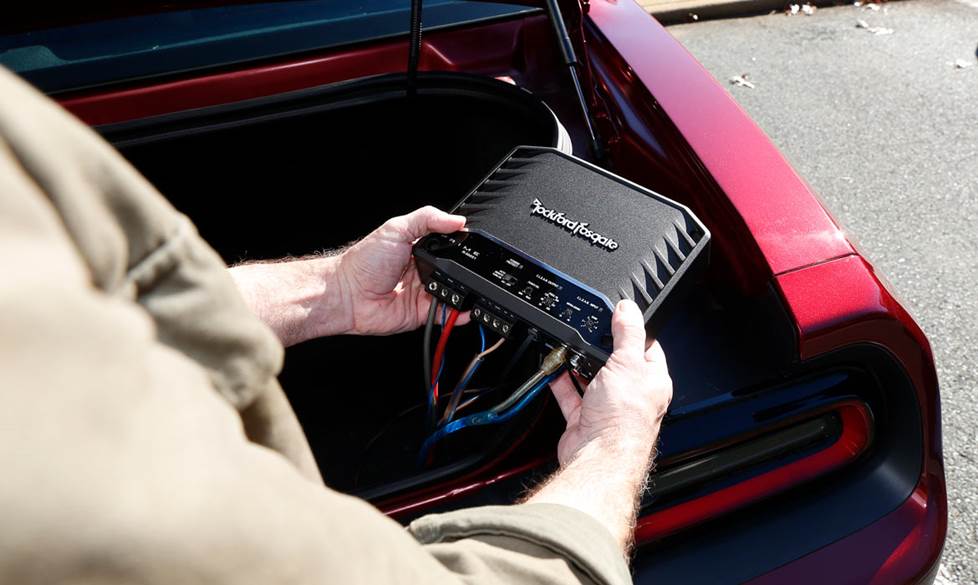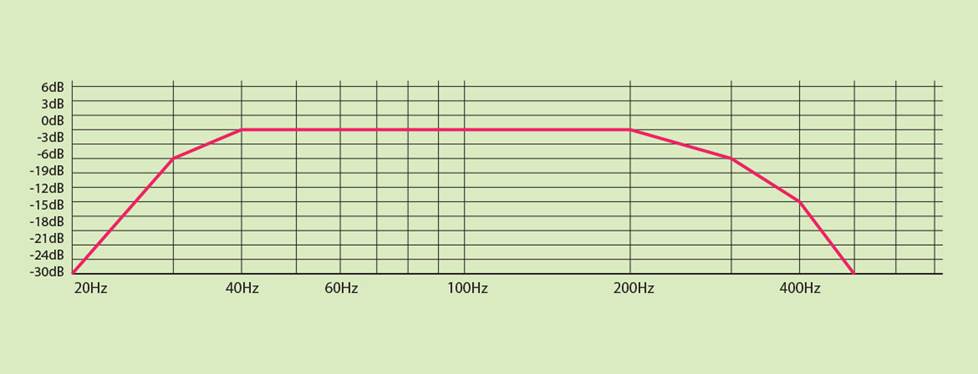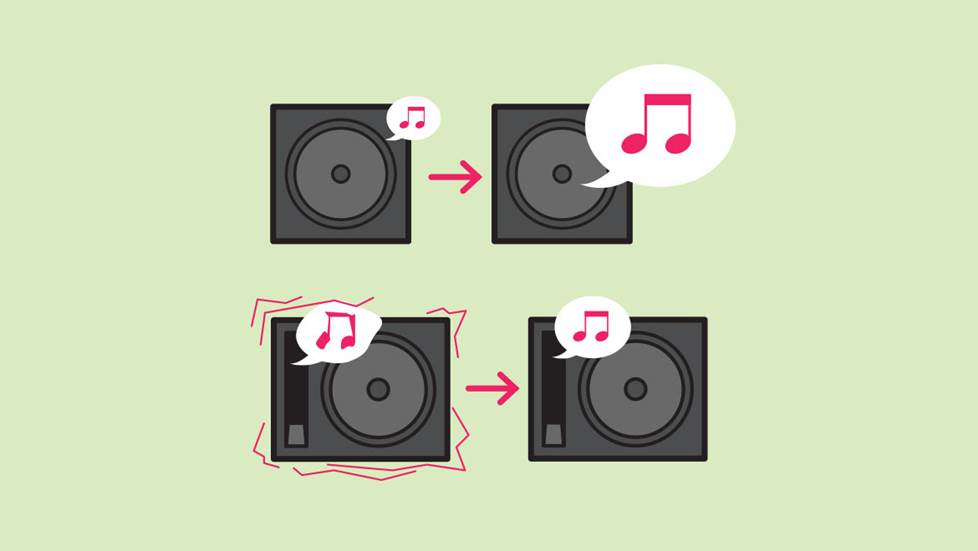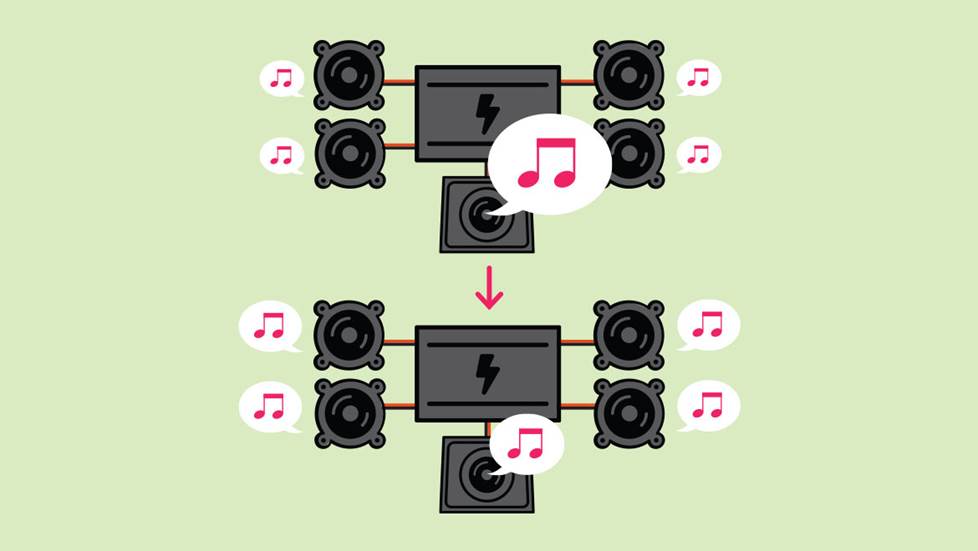How To Set Crossover Frequency On Amp
In this article... I'll bear witness you how to tune your amplifier to get your subwoofers to sound just the way you want them to. Only follow these elementary steps for great bass:
- Step 1. Remove the baloney
- Step 2. Flatten the signal, open the low-pass filter
- Step 3. Adjust the subwoofer gain and low-pass filter
- Step four. Adjust the bass boost and subsonic filter
- Step 5. Match the subwoofer level to the receiver book
I of the things I like well-nigh nigh subwoofers is that I can experience the musical emotion straight with my torso. The low frequency shell oft forces me to dance effectually, or, at the very least, nod my head forth with the rhythm. That'southward why we all like music in the first place — information technology moves us.
It tin can take a little time and endeavour to get the verbal bass sound you lot want from your subs, simply the rewards of a well-tuned subwoofer system are overwhelmingly cool and physically satisfying.
Before we go started...
If y'all are looking for data near buying subwoofers, please read our Subwoofer Ownership Guide and check out our selection of top-rated subwoofers, then come back here to learn more nigh setting them up to deliver great sound.
First, set up your speaker level
Keep in listen, distortion is the enemy — it destroys speakers, subs, and eardrums. Distortion sounds like crackling, flapping, crunching, or hissing that interferes with the singled-out sound of a musical instrument. If you power your full-range car speakers with an amplifier, it is crucial that the amp'due south gain is properly set to preclude distortion.
[Need an amplifier? Meet our full pick.]

Step 1: Remove the distortion
With the amp gain set low, play some music and turn upwards your receiver's volume until you hear the music distorting; so back off the volume until the music sounds make clean once again. Note or marker where the receiver's book is. This setting is the maximum volume your receiver tin can become to and still play cleanly.
At present, turn the amp's gain upwards until you hear distortion again; then back off the proceeds slightly until the baloney goes abroad. The amp gain is now set, so y'all can lower the receiver volume to a more comfortable level. Fifty-fifty if your speaker system does non accept an amplifier, you yet demand to find that maximum volume point on your receiver by turning information technology up to merely below distortion level.
Now you're set for some bass
Step 2: Flatten the signal, open the low-pass filter
Plough your sub amp's gain to its lowest, well-nigh counter-clockwise position. Switch its low-pass filter on and set it as loftier, clockwise, equally it will go. If information technology has a bass boost, plough it off. If information technology has a remote level control, gear up it to its middle position so, later on, you have the choice of boosting or cutting the bass on an private vocal.
Accommodate your receiver's bass tone control to its middle, zero, or "flat" setting, whichever information technology's chosen on your stereo. If information technology has a subwoofer level control, set it, also, to its centre, or "no gain" setting. Sometimes receivers take a crossover, low-laissez passer filter, or bass boost on their subwoofer output. Make sure those are all turned off, as well.

Start by turning the proceeds downward, and turn off your filters and bass boost.
Notation: Do not employ the low-pass filters, crossovers, or bass boosts on the receiver and the amplifier at the aforementioned time. Apply i or the other, merely not both. The reason is that something called phase distortion generates around each filter or boost's crossover frequency, muddying upwardly the sound.
Stride three: Adjust the subwoofer gain and low-pass filter
Play music through your receiver at almost one-quarter volume. Turn upwardly the gain of the subwoofer amp until the sound from your subwoofer completely overpowers the other speakers, without distorting.

Turn the gain up until information technology distorts, then back it off until the sound is clean once again.
While listening to the music coming out of your sub, slowly adjust the sub amp's depression-pass filter down until all the high- and mid-frequency notes disappear.
The depression-laissez passer filter eliminates the notes you don't desire your subwoofer to play. It likewise acts like a tone control to capture the "edges" of the kick drum's sound; the assault and release of its boom. Filter out the cymbals, strings, vocals, and guitars. Get out the bass and the low drums.
Pace 4: Bass heave and subsonic filter
If you take a bass boost, effort carefully turning it up to hear what the bass pulsate sounds like when you practise. Applying but a little bass boost volition bring upwardly the kick a lot. Be careful with the bass boost, if yous choose to employ it — this is where baloney is often introduced into a system. If you hear baloney, lower the sub amp's gain until it goes away. Use the bass heave to feel the vanquish in the air your sub moves.

At present play with the bass heave.
For ported subwoofers, utilise a subsonic filter on your amplifier to tame any overly loud low notes. This will help decrease the levels of the notes at which the enclosure resonates. Fine-tune all the filters some more to make the bass drum sound tight and dry or loose and reverberant, co-ordinate to your personal taste. I like reggae and soul, so my bass is plenty loud, but it's a bit drier than most people might like.
The of import thing is to keep adjusting your arrangement until you hear something you like. When you're satisfied with the tone of your system's bass and kicking, plough the subwoofer's book down as far equally y'all tin can, using the subwoofer level in the receiver'due south audio aligning menu or the remote bass knob if yous take one.
Blending all the frequencies
At present that each piece of the puzzle is fix, it's time to bring all the music into focus.
Step 5: Matching the subwoofer level to the receiver volume
Plough up the receiver'south volume to its maximum, distortion-free position. And then slowly plough up the subwoofer volume until the bass sounds balanced with the rest of the music. That should do it.

Run your remote bass boost or level command upwards and down a petty to hear what it does. Considering of the size of the audio-visual infinite in a car, subwoofers sometimes don't combine their sound constructively with the residual of a arrangement's sound waves. If your bass has plenty of volume but seems to lack dial, you can sometimes help it by reversing your sub'southward speaker leads. This reverses the subwoofer cone's frontward and backward movements, which might put all the audio waves together better than the other way. Whichever way sounds all-time is the right way.
Troubleshooting any bug
If you hear distortion coming from your subs, decline the sub amp's proceeds. If, at this betoken, you cannot go plenty bass out of your subwoofer to keep upwardly with the other speakers without distorting, then you will need to go a bigger subwoofer and amplifier combination, with higher power-handling abilities.
You shouldn't lower the gain of your full-range amplifier to try and lucifer your lack of subwoofer volume. Doing so could allow the amp to transport out distorted, clipped signals to your total-range speakers, defeating your goal for clean, full sound, which is why y'all put in a subwoofer to begin with. More power, especially in the bass, is e'er better than not having enough.
At present y'all should be able to enjoy the robust fullness and shell of your music with your sub tuned up to match your system'southward capabilities and your ear's preference. Just remember to be polite, and turn your boom volume downwards when it might bother other people.
Learn more most sound tuning
For more than information on how to tune your car sound stystem, see Calculation a four-Channel Amp. To learn more well-nigh getting the best audio out of your amplifier, accept a look at our Amplifiers FAQ and Glossary articles.
Source: https://www.crutchfield.com/ISEO-rgbtcspd/learn/car/subwoofers/tuning.html

0 Response to "How To Set Crossover Frequency On Amp"
Post a Comment